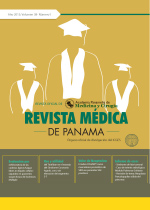Manejo médico-dental de una paciente de la tercera edad con apnea obstructiva del sueño y roncopatía. Reporte de caso
Autores/as
DOI:
https://doi.org/10.37980/im.journal.rmdp.20221863Palabras clave:
ronquido, oclusión, sistema masticatorio, abnea obstructiva del sueño, bruxismo del sueñoResumen
Introducción: Los Desórdenes del Sueño (DDS) son condiciones médicas peligrosas y la Apnea Obstructiva del Sueño (AOS) y la Roncopatía están dentro de las categorías de las Respiratorias. Son aproximadamente 90 y están agrupadas en 6 tipos. Un tercio de la población puede sufrir alguno, pocos son diagnosticados o tratados y el promedio que dormimos es 6 horas de 8 requeridas. Su impacto en la salud y el bienestar general es considerable y conocido. Reporte de caso: Paciente femenina de 68 años que asiste para atención medica por ronquidos que perturbaban el sueño de sus familiares y mal sueño, con ronquidos estridentes al dormir que despertaba a sus familiares. Antecedentes médicos de importancia: hipertensión arterial (HTA) tratada desde hace 20 años. Se observó un riesgo cardiovascular moderado de 44%. Los diagnósticos de DDS del tipo Respiratorio fueron: 1. AOS, en grado leve. 2. Roncopatía. Conclusión: Los DDS son enfermedades peligrosas, incapacitantes y comunes y las respiratorias y las de movimiento, pueden y deben ser detectadas por los Médicos y los Odontólogos durante un examen de rutina.
Archivos adicionales
Publicado
Número
Sección
Licencia
Derechos de autor 2022 Infomedic Intl.Derechos autoriales y de reproducibilidad. La Revista Médica de Panama es un ente académico, sin fines de lucro, que forma parte de la Academia Panameña de Medicina y Cirugía. Sus publicaciones son de tipo acceso gratuito de su contenido para uso individual y académico, sin restricción. Los derechos autoriales de cada artículo son retenidos por sus autores. Al Publicar en la Revista, el autor otorga Licencia permanente, exclusiva, e irrevocable a la Sociedad para la edición del manuscrito, y otorga a la empresa editorial, Infomedic International Licencia de uso de distribución, indexación y comercial exclusiva, permanente e irrevocable de su contenido y para la generación de productos y servicios derivados del mismo. En caso que el autor obtenga la licencia CC BY, el artículo y sus derivados son de libre acceso y distribución.






